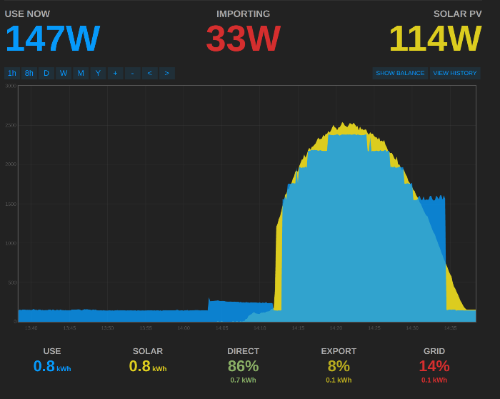Demand Side Response Development
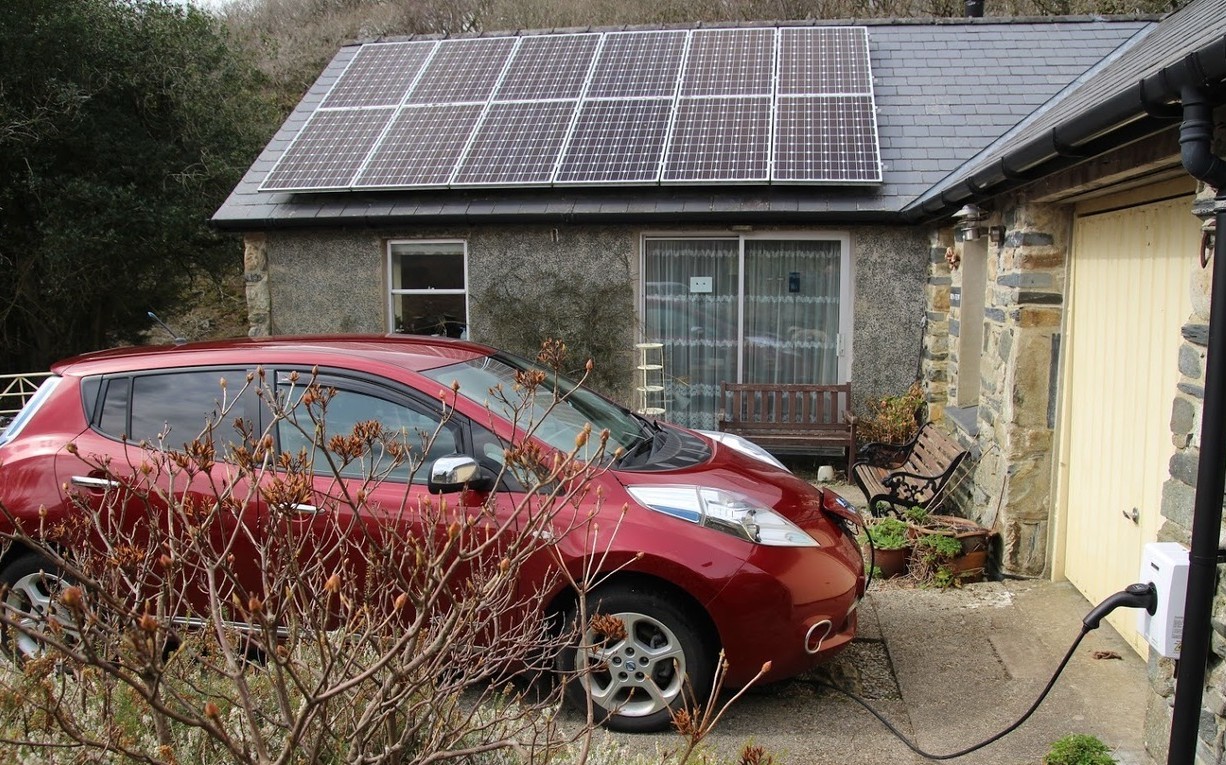
Demand side response (DSR) has been a OpenEnergyMonitor project interest for some time (e.g PV diversion) but has only made its way into a product more recently with our work on the OpenEVSE charging station. The OpenEVSE already implements real-time DSR, this post outlines how we are working on improving on this by integrating the forecasting and scheduling approaches being developed as part of our involvement in the EnergyLocal project.
DSR: Demand Side Response is the idea of moving demand to
- Better match supply, something that becomes more important as we supply more of our electricity from renewable energy.
- Reduce electricity system cost by reducing the maximum dispatchable generation, distribution and transmission grid capacity needed.
Household electricity demand such as lighting, computing, TV, cooking, fridge/freezer, washing have relatively low DSR potential, either due to the need for these demands to happen during times of occupancy (peak demand) or because these demands are relatively small.
However as we move towards a zero carbon future, most scenarios suggest that large scale electrification of transport and heat is needed, alongside powering up of renewable energy. Both electric vehicles and electric heating e.g heatpumps & hot water storage have significant DSR potential.
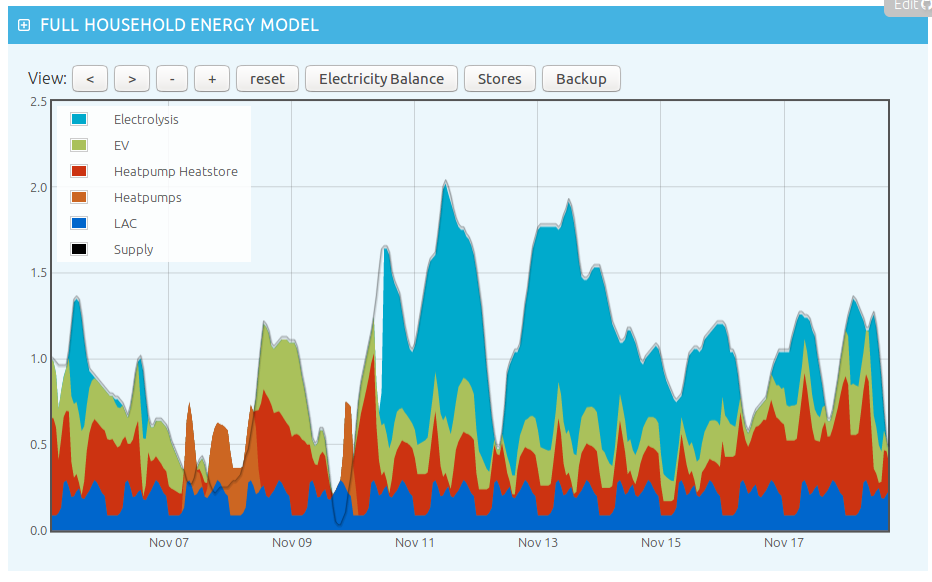
|
This screenshot from our work on modelling zero carbon energy systems based on The Centre for Alternative Technologies ZeroCarbonBritain model https://learn.openenergymonitor.org/sustainable-energy/zcem/integrated shows an example of the extent to which renewable energy supply could vary in the future and so the potential for DSR to move demand to better match supply.
Dark blue: traditional household electricity demand (minus any heating), Red: heatpump demand with DSR, Green: EV demand with DSR, Blue: Electrolysis demand for synthetic fuels soaking up large excess capacity, Total: Wind and solar output. |
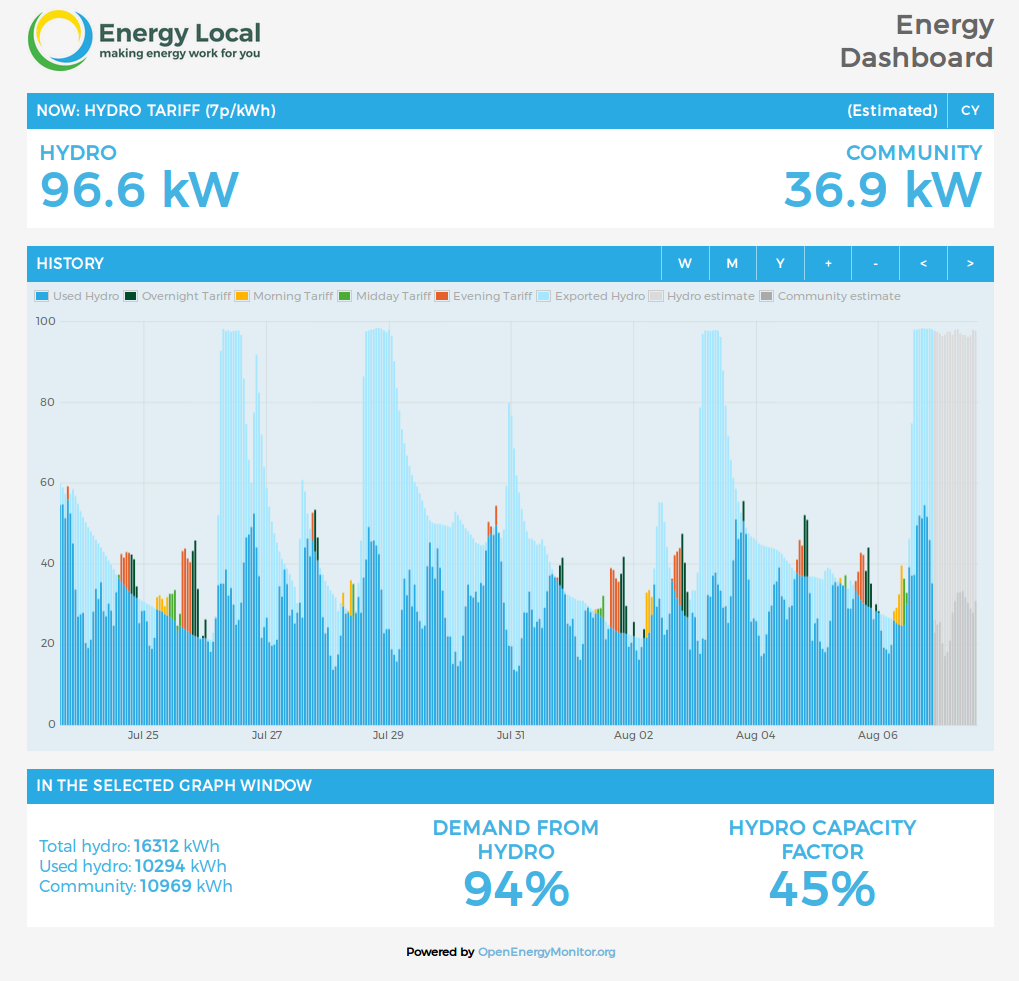
|
Energy local are pioneering community energy aggregation tariffs with both time of use pricing and pricing based on availability of a local renewable energy generator. A household with loads suitable for DSR can lower their electricity cost and use a greater amount of local power by shifting their demand to better times.
EnergyLocal provide a day ahead forecast that can be used to schedule appliances, EV’s, hot water storage etc. |

|
For households not able to take part in community energy aggregation tariffs such as EnergyLocal, Octopus Energy have recently introduced a time of use tariff, that reflects wholesale electricity prices. https://octopus.energy/agile
Agile also provide a day ahead price profile that can be used for scheduling. Savings made by using these tariffs can help payback expenditure on smart energy technologies. Especially where battery or heat storage is considered during the build or retrofit stage. E.g using thermal mass to store heat from heatpumps during times of excess supply. |
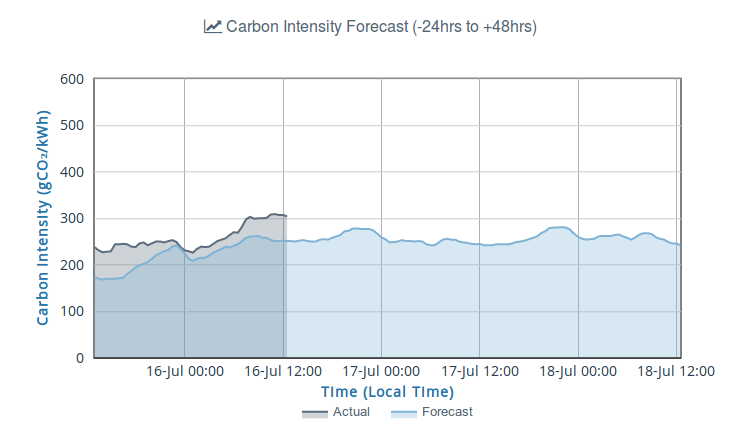
|
Another approach to forecasting could be to use [grid carbon intensity](http://carbonintensity.org.uk/), weather forecasts e.g darksky API and grid demand forecasts (to avoid peak times).
Users keen to stay with their existing electricity suppliers e.g Ecotricity for Electric Highway EV charging benefits could still make use of scheduling to ensure demand happens at the best time from a carbon and limiting grid strain perspective. |
Control approach
Follow the development of this project and learn about our next steps on the forums.
- Forum post: CydYnni, EnergyLocal Community hydro smart grid</li>
- Github: Emoncms demand shaper module</li> </ul>
